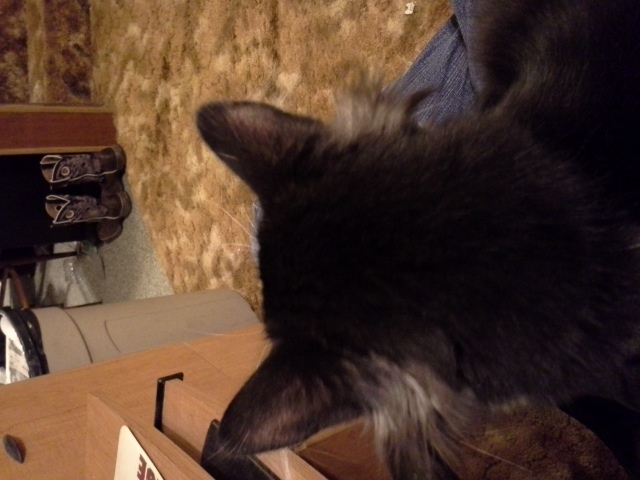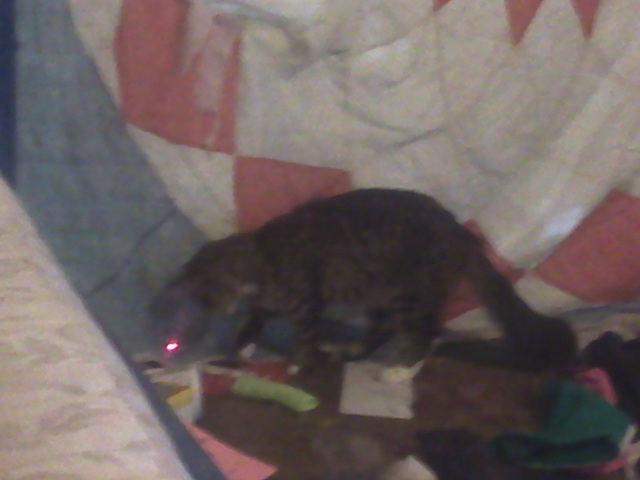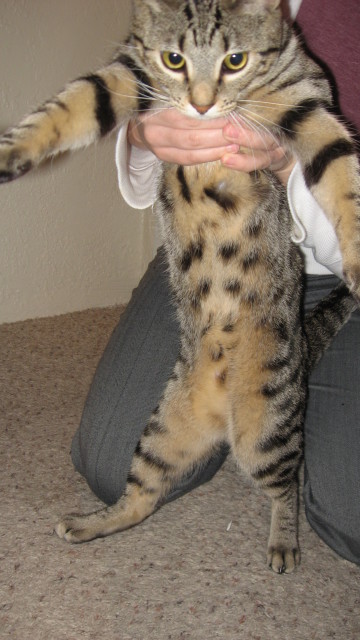Questiondo you recommend de-clawing a cat? my daughter's cat will be 1 yr. old in june. furniture is taking a beating. thankyou
AnswerHello, John. Thanks for taking the time to consider all the views before deciding on this controversial procedure.
You ask if I recommend declawing a cat. In a word, no. I don't condone declawing a cat under any circumstances, unless the cat suffers from a disorder which causes the skin to tear easily, where he will be a threat to himself.
Declawing carries with it many risks - infection, chronic pain, incorrect healing, painful regrowth of the nails, arthritis, and behavioral changes, including failure to use the litter box and aggression and biting.
Declawing is an amputation of each toe at the first joint, about the same as it would be to cut your toes off at the first knuckle. While you or I would stay off our feet, keep our feet elevated, iced, and take pain medications after 10 amputations, a poor cat hasn't got any choice but to walk around on his tender feet, regardless of the pain. A declaw surgery is about the most painful one to recover from, and the bleeding risk is much higher than with most surgeries. Stepping into coarse litter doesn't help the pain, of course, and many cats stop using the litter box. Some do right away, some do years down the line. But litter box problems are the number one reason why declawed cats are left at shelters or euthanized, affecting up to 50% of all declawed cats. When you ask yourself whether you'd rather have a cat who scratches furniture or a cat who pees on furniture, the answer may seem obvious.
Cats are digitigrade, meaning they walk on the tips of their toes. Well, those tips are removed during declawing, and a cat needs to learn to walk unnaturally once the tips of his toes are gone. This results in irregular pressure and wearing on bones ranging from the toes themselves, all the way down the spine. So many declawed cats suffer from early arthritis.
Also, a cat's first line of defense is his claws. When those are taken away, a cat can feel threatened and on edge, and they become aggressive and resort to biting. This is the second most common complaint of owners of declawed cats.
Finally, cats need their claws for emotional health. They use their claws for stretching and marking their territory. It's common for declawed cats to become depressed.
Fortunately, there are alternatives to declawing. Providing a proper scratching post helps in many cases. Ideally, scratching posts should be available in natural wood, sissal, carpeted, or cardboard. They can be vertical, horizontal, or inclined. They should be at least 24" long. Rubbing some catnip into the posts should help attract the cat to them. Anytime you catch the cat scratching inappropriately, redirect him to the post, and praise him when he uses it. It may be best to place the post next to the furniture he's scratching at first, and move it slowly to a more appropriate spot as he begins to use it regularly.
In the meantime, you may want to apply Feliway, a synthetic cat pheromone, to the areas he's been scratching. This helps reduce the need for cats to scratch for territorial marking. It's available at pet stores and through their site, www.felineway.com.
You may also want to apply Sticky Paws to the furniture he's been scratching. It's basically double-sided tape, which feels uncomfortable on the feet. It's available at pet stores and through www.stickypaws.com.
Also, nails can be trimmed flat to prevent damage. You can use human nail clippers, or buy trimmers from a pet store. Hold the nail sideways, and look for the quick, which will appear as a white or pink tissue under the nail. Cut the nail halfway between the tip and the quick. Trimming should be done weekly.
Finally, perhaps the most miraculous product I've ever used, is one called Soft Claws. These are rounded vinyl caps that are glued over the cat's natural nails. They stop all damage from scratching. They are easy to apply, and my cats have never even noticed they were wearing them. They should be replaced every 6 weeks, as the natural nail grows out. You may need to replace individual caps the fall off, periodically, if the cat is extremely active. I've found my cats only need to wear them for a couple months before the habit of scratching is broken, and then they don't need them any longer. They come in 4 sizes and many colors. These are also available at pet stores, and through www.softclaws.com.
Best wishes to you all!
Jessica

 Can you give me an idea for possible cat breed?
Question
Tufts Maverick
My cat Maverick ha
Can you give me an idea for possible cat breed?
Question
Tufts Maverick
My cat Maverick ha
 dones my cat sweet pea look pregnant?
Question
sweet pea sweet pea nipples
Hi w
dones my cat sweet pea look pregnant?
Question
sweet pea sweet pea nipples
Hi w
 my first kitten
QuestionQUESTION: hi im just wondering if u know what k
my first kitten
QuestionQUESTION: hi im just wondering if u know what k
 What breed is my cat?
QuestionBoots
QUESTION: Hi Norman, i was hoping
What breed is my cat?
QuestionBoots
QUESTION: Hi Norman, i was hoping
 Injured tip of ear / Follow up
QuestionBagBoy
QUESTION: My 7-month-old cat, Har
Injured tip of ear / Follow up
QuestionBagBoy
QUESTION: My 7-month-old cat, Har